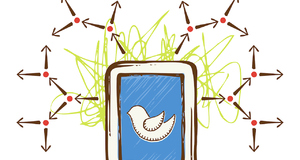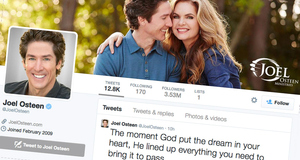From Elon Journal of Undergraduate Research in Communications VOL. 5 NO. 1A Content Analysis of Twitter Use: Factors That Might Increase Music Sales During an Award ShowAnalysis and ConclusionsThere were many common tweets with the same wording and content. The same pattern was shown among retweets, favorites and hashtags. These seem to support Social Influence Network theory since people picked up on common content trends and contributed to these trends by tweeting similarly worded tweets as well as retweeting popular tweets about the artists. According to Uses and Gratifications Theory, audience members engaged in the award show as concurrent viewers and commentators. Even though they posted tweets or retweets, the amounts of tweet activities they were involved in were not translated into increases in music sales for the artists who performed at the show, as shown in Figure 1. With the category of celebrity reactions, which was a notable trend in tweets about Drake, it was inferred that the director influences the circulating social media content during the award show. Through the director’s selection of shots in the filming of the show, the director brings aspects of the show to the forefront of the viewers’ attention. This includes celebrity reactions, such as Rihanna’s reaction to Drake’s performance. The social media content written about the artist has some relationship with the music sales. Interestingly, the two artists who had the highest percentage increase in sales, Timberlake and West, had the category of quality ranking in their top categories—due to the positive aspects of quality for Timberlake and the negative aspects for West. The category of quality did not even rank in the top categories for both Robin Thicke’s performance and Drake’s performance, and their sales increase in music paled in comparison with that of Justin Timberlake and Kanye West. This suggests that people also consider other factors beyond the quality of the performance when purchasing artists’ music. Timberlake saw 1,876 percent of increase during the award day in comparison to the previous day. In the case of Kanye West, the sales increase reached 1,187% despite his low perception score of -0.42. From these findings, it was determined that negative content through social media may not necessarily hinder an artist’s sales of music, as can be seen by West’s results. This establishes the notion that negative social media content may be better than no social media content from media-active consumers. Conversely, in cases like Justin Timberlake’s positive content via social media may substantially help an artist’s sales in music. Kanye West’s results contradict the expectation of a positive relationship between the perception scores and percentage increases in sales. Although West had the second largest increase in sales, the content analysis showed a strong negative sentiment among the tweets written about him. West scored the second lowest score in his perception score. Therefore, from the content analysis, it may not be concluded that the content within the tweets directly contributes to the increase in sales since West’s results reflect otherwise. This study found that Friedkin’s Social Influence Network Theory can be applied to marketing the artist, not Uses and Gratification Theory. The music sales of the artist are somewhat related to Twitter followers’ perception of the artists. The limitations of this study include a small sample of tweets selected for analysis. The four artists selected for this analysis had hundreds of thousands of tweets per minute during their performance, but this sample contains only 850 tweets. Additionally, there are other factors that might have influenced the increases in sales, such as the radio or the music awards show itself. How much their performance was played following the show might have an impact on the sales. The show itself might also have a big impact on the sales, regardless of whether people tweeted about it or not. Also further studies should be done to check whether music sales increases were really influenced by the Twitter posters who had a favorable perception of the artist versus other types of viewers who had a negative perception or who did not post tweets at all. AcknowledgementsThis author is thankful to Dr. Scott at Elon University for his supervision and advice, without which the article could not be published. The author also appreciates both Dr. Byung Lee and the anonymous reviewers whose suggestions improved this article. ReferencesCunningham, T., Hall, A., & Young, C. (2006). The advertising magnifier effect: An MTV study. Journal of Advertising Research, 46(4), 369-380. Graver, F. (2013, August 26). #VMAs 2013. https://blog.twitter.com/2013/vmas-2013 Greer, C. F., & Ferguson, D. A. (2011). Following local news personalities on Twitter: A uses and gratifications approach to social networking. Electronic News, 5(3), 145-57. doi: 10.1177/1931243111420405 Harrington, S., Highfield, T., & Bruns, A. (2013). More than a backchannel: Twitter and television. Participations: Journal of Audience and Reception Studies, 10(1), Retrieved from http://www.participations.org/ Volume 10/Issue 1/30 Harrington et al 10.1.pdf Hill, S., & Benton, A. (n.d.). Social TV: Linking TV content to buzz and sales. Retrieved from http://www.bus.umich.edu/Academics/Departments/TO/pdf/MichiganDraft.pdf Learmonth, M. (2009). Social media paves obama’s way to white house: Presidential run raised the bar for campaigns, offered plenty of lessons for consumer brands. In K. Partridge, (Ed.) Social Networking. New York: H.W. Wilson Company. Long, M. (2012). Beyond the press release: Social media as a tool for consumer engagement. In H. Noor Al-Dean & J. A. Hendricks (Eds.), Social Media Usage and Impact (pp. 145-159). Lanham: Lexington Books. Montgomery, J. (2013, August 28). Miley and justin get big vma bumps. Retrieved from http://www.mtv.com/news/articles/1713229/katy-miley-justin-kanye-charts.jhtml Perrilliat, J. A. (2012). The benefits of Twitter for music fans and consumers. (Master’s thesis, University of North Texas, 2012). http://digital.library.unt.edu/ark:/67531/metadc115138/m2/1/high_res_d/thesis.pdf Popkin, H. A. S. (2013, August 26). Miley Cyrus twerks her way to top of Twitter at 300,000 tweets per minute. NBC News. Retrieved from http://www.nbcnews.com/technology/miley-cyrus-twerks-her-way-toptwitter-300-000-tweets-8C11006754 Prell, C. (2012). Social network analysis: History, theory & methodology. London: SAGE Publications Ltd. Proulx, M., & Shepatin, S. (2012). Social TV: How marketers can reach and engage audiences by connecting television to the web, social media and mobile. Hoboken, New Jersey: John Wiley & Sons, Inc. Retrieved from http://books.google.com/books?hl=en&lr=&id=_CLDODbUra8C&oi=fnd&pg=PT11&dq=Tweeting while watching television programming&ots=MxnkG46TpM&sig=GXWNg0Y_EX3maOJGZWgNNUdXq4c Rosenberry, J., & Vicker, L. (2009). Applied mass communication theory: A guide for media practitioners. (p. 283). Boston: Pearson Education, Inc. Rothman, L. (2013) MTV awards prove[s] ratings and sales hit (even for Miley). Time. Retrieved on September 17, 2013 from http://entertainment.time.com/2013/08/28/mtv-awards-proves-ratings-and-sales-hiteven-for-miley/ Wohn, D. Y., & Na, E. (2011). Tweeting about TV: Sharing television viewing experiences via social media message streams. First Monday: Peer-Reviewed Journal on the Internet, 16, 3-7. Retrieved from http://firstmonday.org/ojs/index.php/fm/article/view/3368/2779 Endnotes
Suggested Reading from Inquiries Journal
Inquiries Journal provides undergraduate and graduate students around the world a platform for the wide dissemination of academic work over a range of core disciplines. Representing the work of students from hundreds of institutions around the globe, Inquiries Journal's large database of academic articles is completely free. Learn more | Blog | Submit Latest in Business & Communications |



















